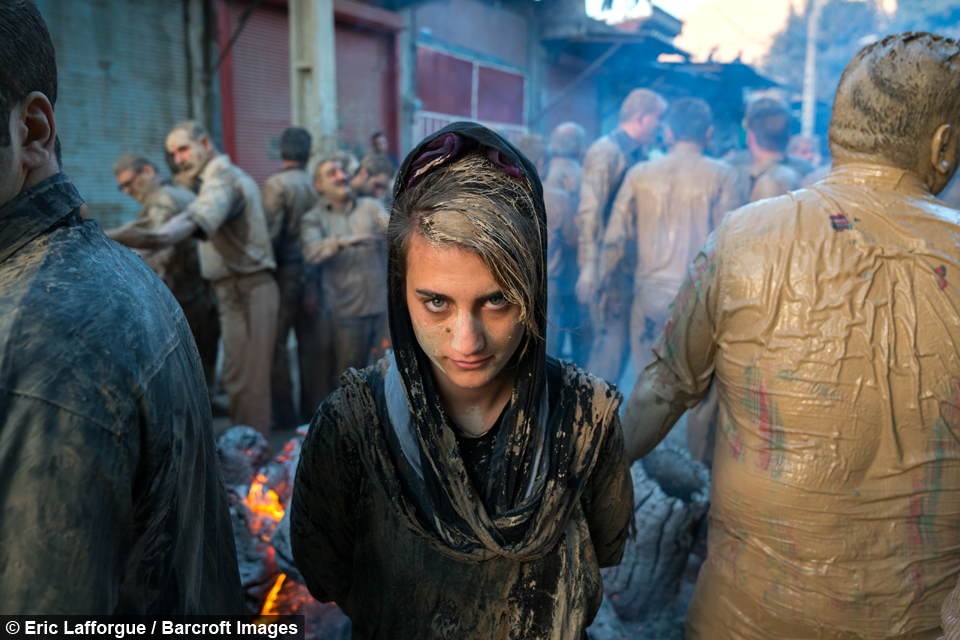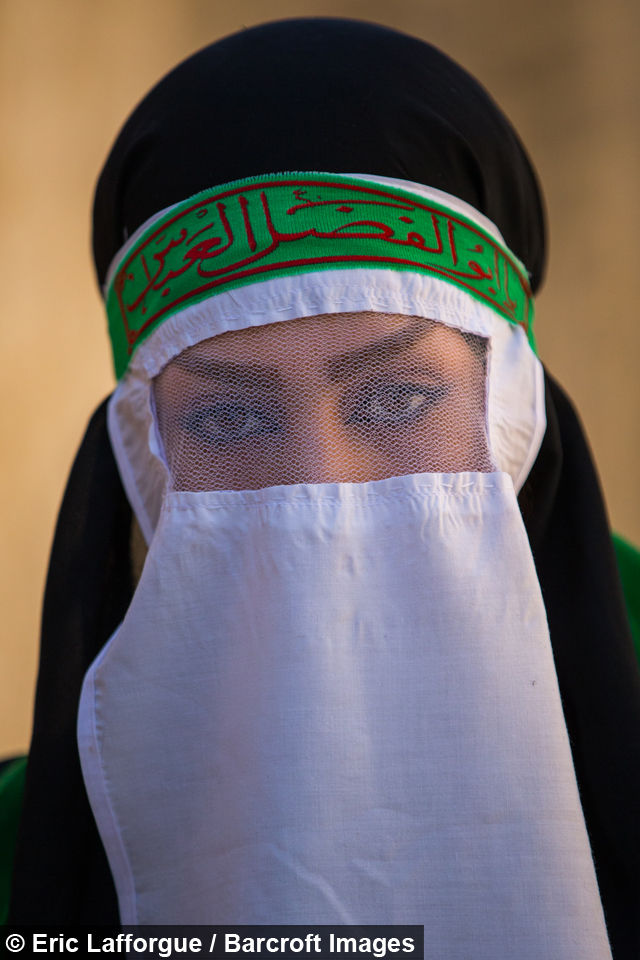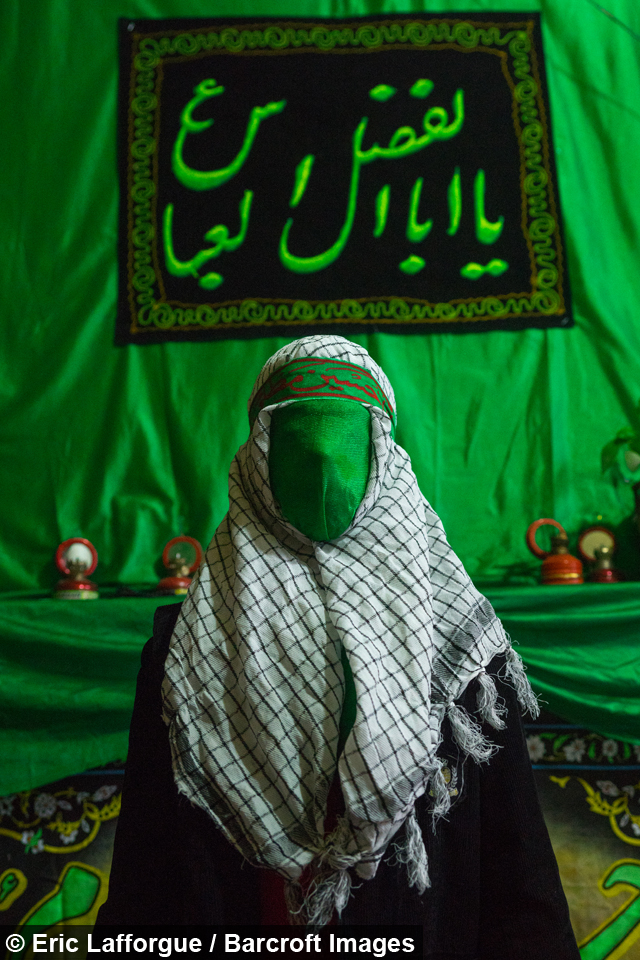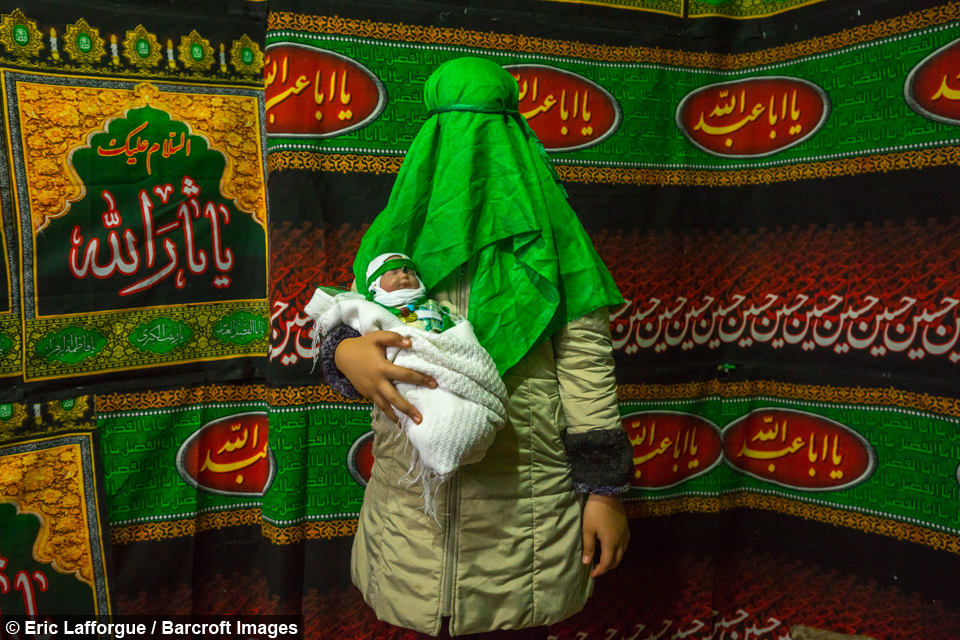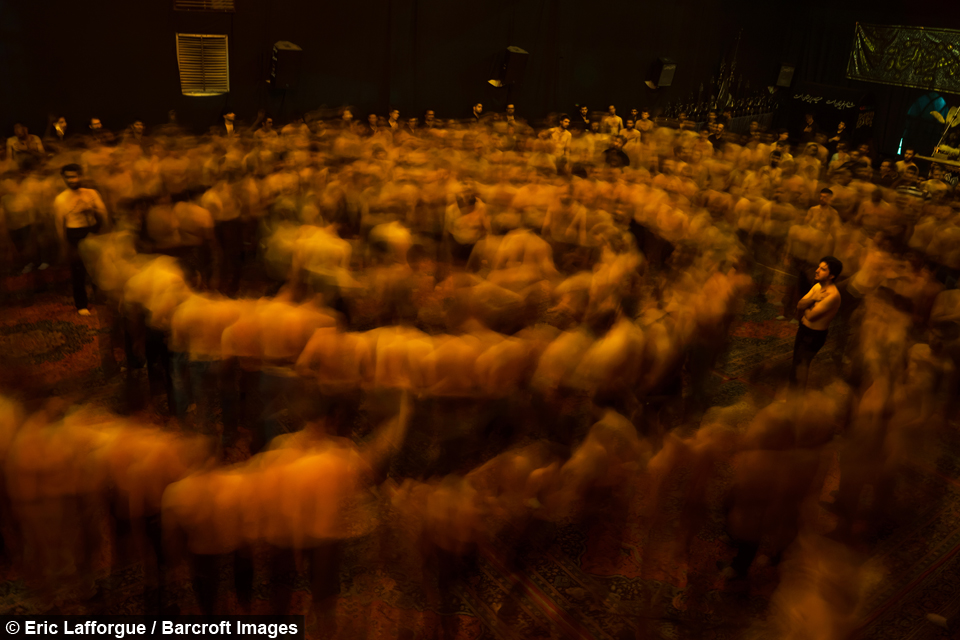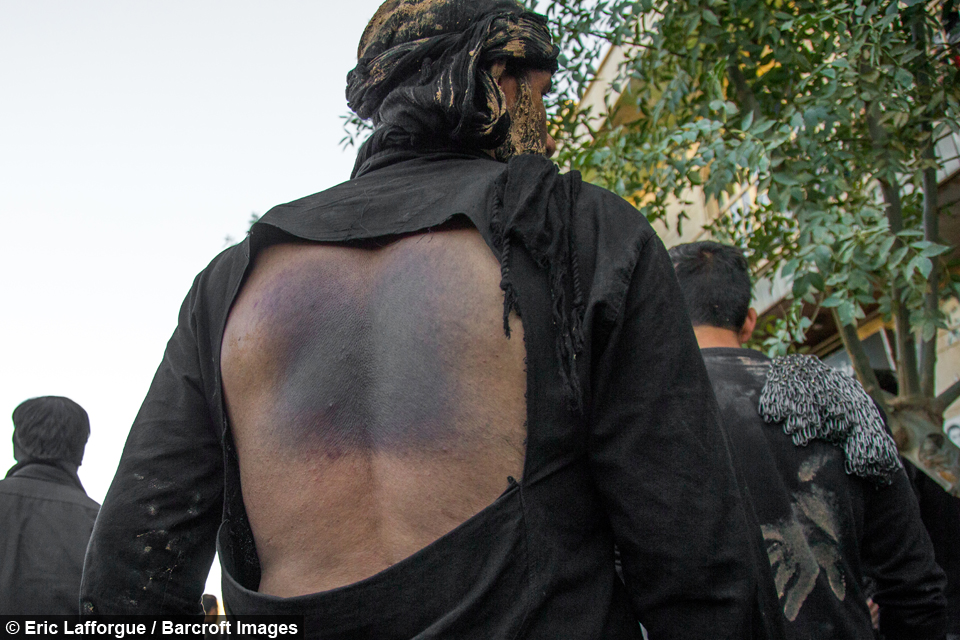Thousands of Iranians flood the streets to mourn religious martyr
By Hannah Stevens @Hannahshewans
Scroll down for the full story
Every year Shia Muslims flood the streets to publicly mourn the loss of their third Shia Imam - Imam Hussein - who became a martyr when he was beheaded in 680CE alongside his 72 companions, by the tyrannical self-proclaimed Caliph of the time, Yazid.
The global event is celebrated during the first month of the Islamic calendar - Muharram - and the tenth day, Ashura, signals the climax of mourning however, for Sunni Muslims Ashura is considered as a day for fasting and memorialising Allah’s role in rescuing Moses and the Israelites form the Egyptian pharaoh.
For Shia Muslims the focus of Muharram is the commemoration of the Prophet Mohammed’s grandson - Imam Hussein - who is remembered for his integrity and bravery as he faced death when he refused to bow to the tyrannical Yazid in Karbala.
Photographer Eric Lafforgue attended Muharram for the second time in October to bear witness to the processions, lamentation and food offerings, known as Nazri.
He said: “I saw on TV men beating themselves with iron chains but I did not know anything about the tradition.
“Many people don’t know about the differences between Shia and Sunni Muslims - I was one of them. Then an Iranian friend explained the difference to me and I started to understand that Ashura was not an aggressive time like it might look to foreigners.
“I found out it was possible to come and share in the celebrations and even be a part of them, even as a Christian, so I decided to go.”
As well as mourning Imam Hussein, Ashura is also a tribute to truth and justice, condemning tyranny of anytime and any place - a symbol of respect for the Imam’s teachings and courage when he refused to acknowledge Yazid as Caliph.
The traditions of Muharram are varied and documenting them all was an insurmountable task for Eric, but he was able to capture some stunning displays of religious piety.
In Kashan he witnessed 1,000 shirtless men in a trance as they whipped themselves with their hands and in Khorramabad he saw the ceremony of Chehel Manbar - the 40 Pulpits - on Tasua day, the ninth day of Muharram and eve of Ashura.
During the ceremony women and men light 40 candles and throw 40 pieces of sugar into 40 different locations so that they can make a wish - some will even take a vow of silence for the whole day.
Artwork of Hussein is also popular and can be found sprawled across cars throughout Muharram. Offerings of food are prepared throughout Muharram and processions of food offerings are often sponsored by wealthy benefactors.
While Iran still battles a contentious reputation, Eric is a strong advocate for its growth and for the boundless kindness exhibited by its citizens - who welcomed him into their celebrations with open arms.
Eric said: "I always ask before I take a photo, but most of the time I was rushed into the centre of the parade! Even during the Ta’zieh - a theatre play about Hussein’s death - people asked me to go in the middle of the play to take pictures! I refused as I never want to disturb the tradition.
“I tried to stay as long as I could, which was not difficult, but sometimes you feel like you’re disturbing the faith even if nobody told me I was. When 200 people are praying in the dark and you hear the click click of the camera, it is not good.
“I do not like to be an alien amongst the people.”
Despite occurring hundreds of years ago, Hussein’s death still evokes heartfelt lamentation from Shiite Muslims, who express their grief publicly - something which the Iranian government is hoping will encourage tourists to visit the spectacular country.
Lafforgue said: “It is very easy to access, as no tourists go there, they’re afraid, so people are very happy to see you there. They like to explain everything, show you the ceremonies, to feed you, so I made lots of friends - I was so surprised.
“The Iranian government also thinks about making Ashura a good time for tourists. So they started to make huge billboards in the towns to explain what it is, but it is hard to fully explain! I only met two or three tourists while attending the ceremony twice over two years.”


